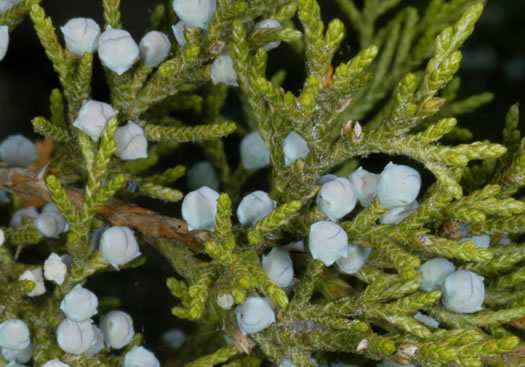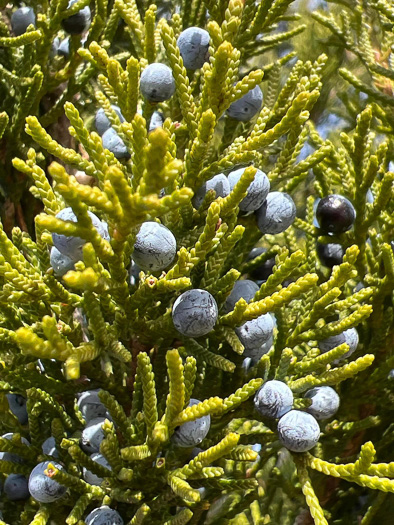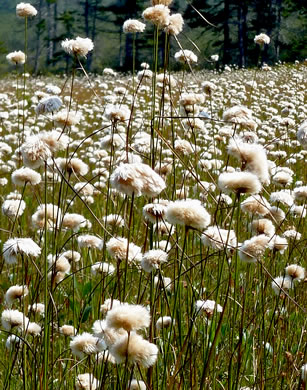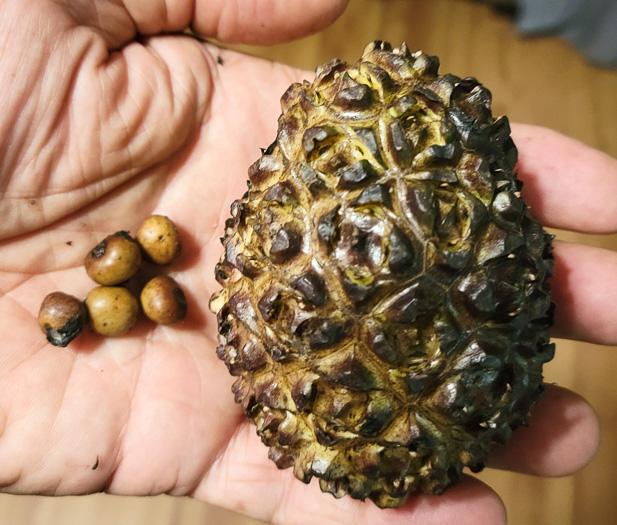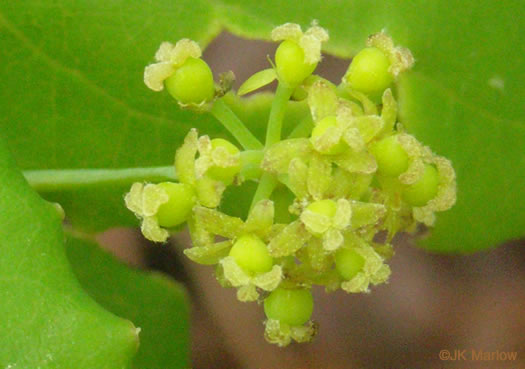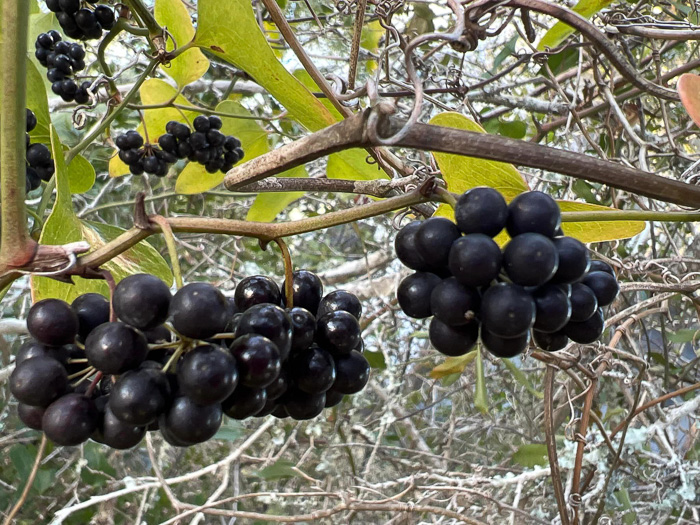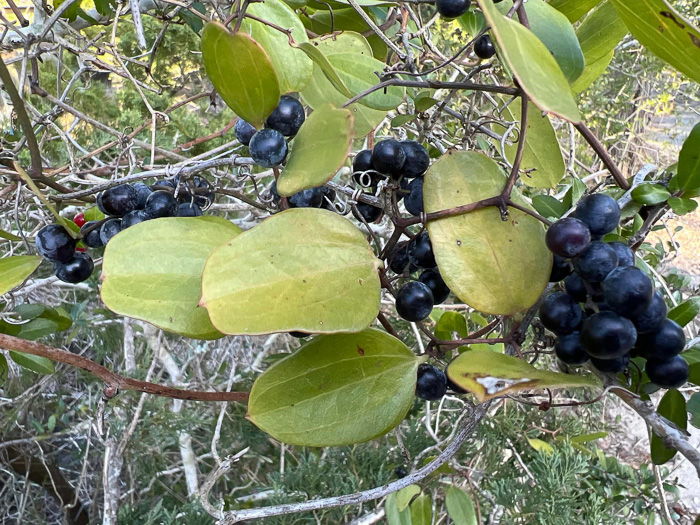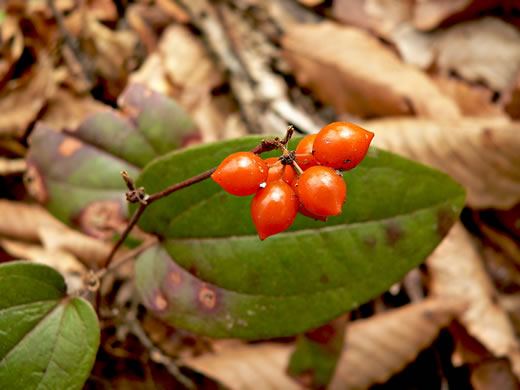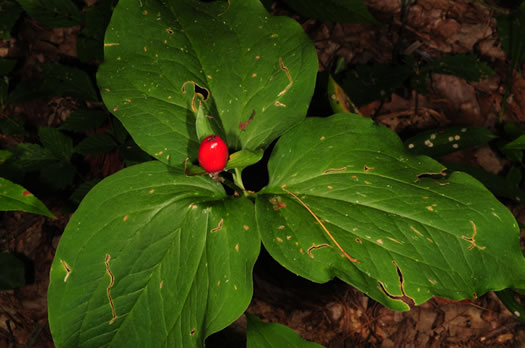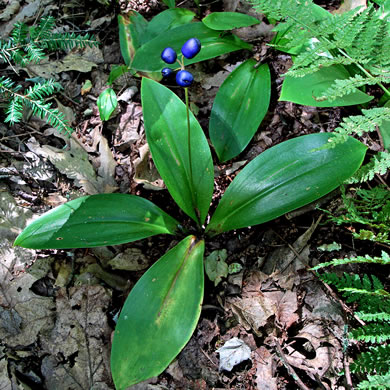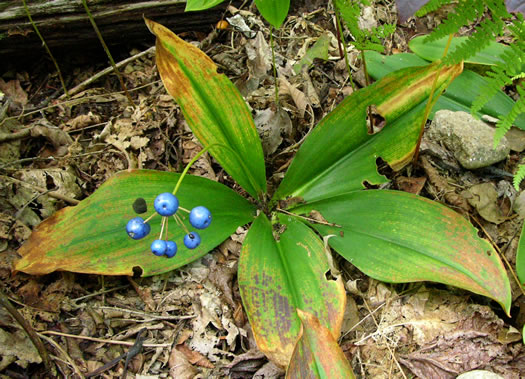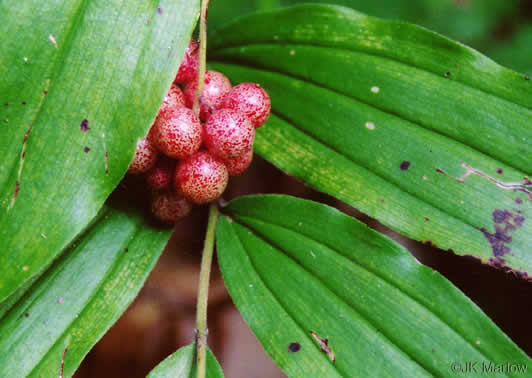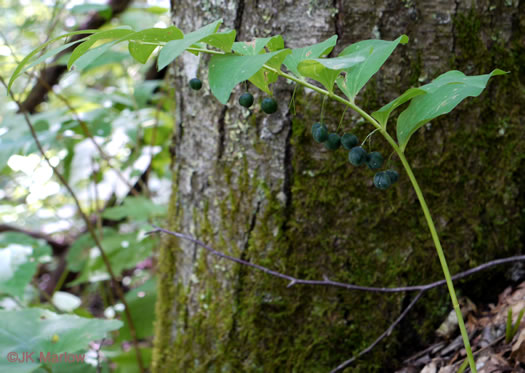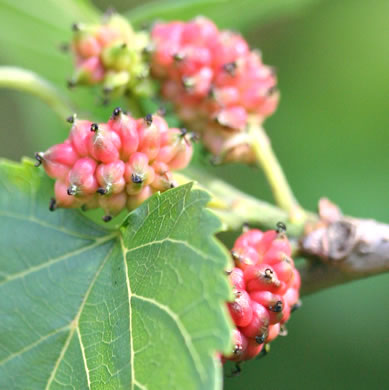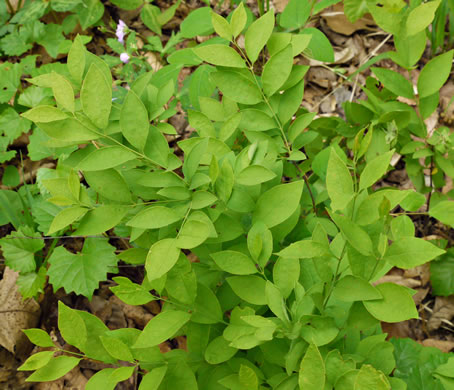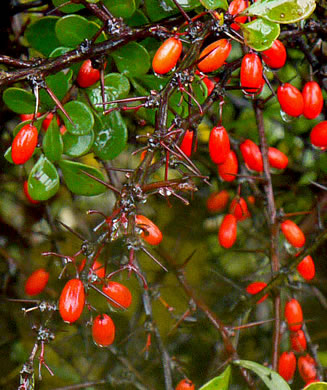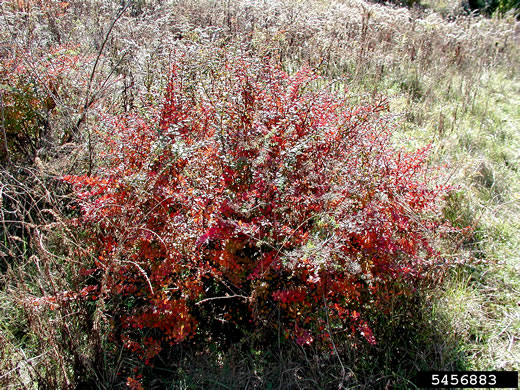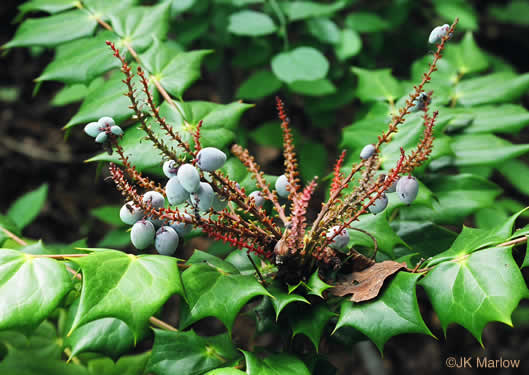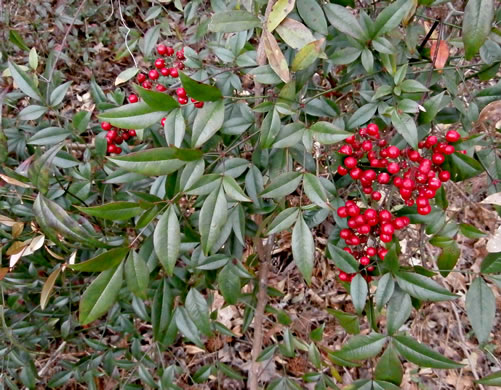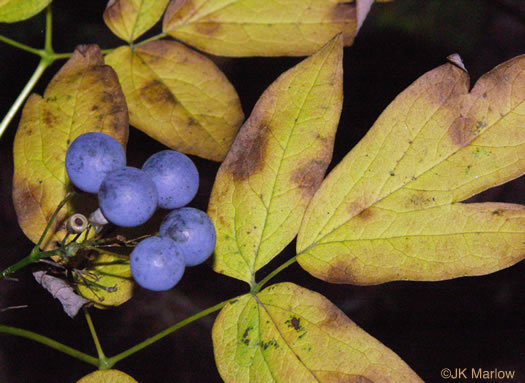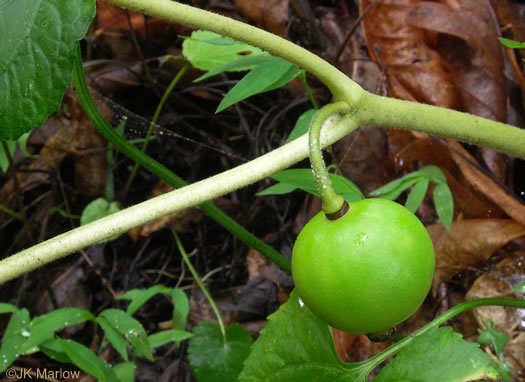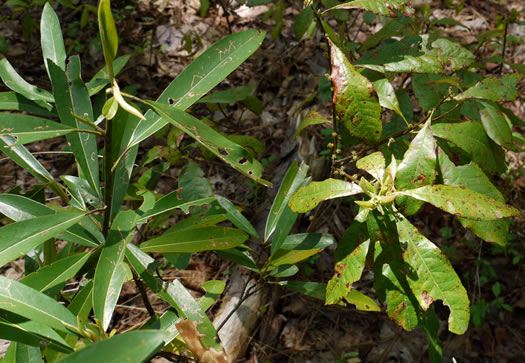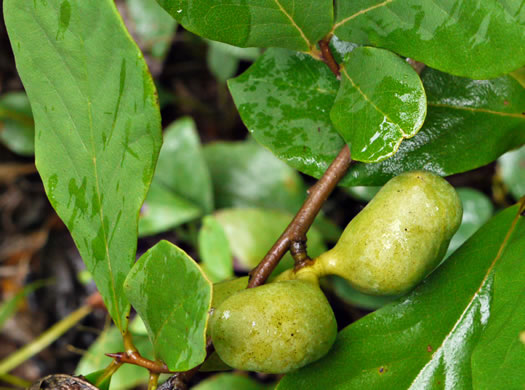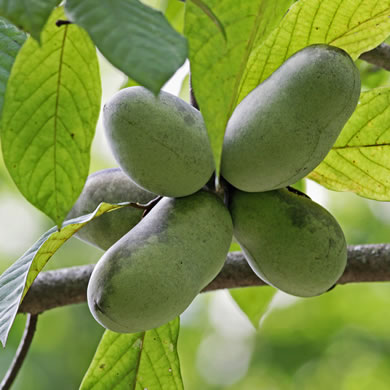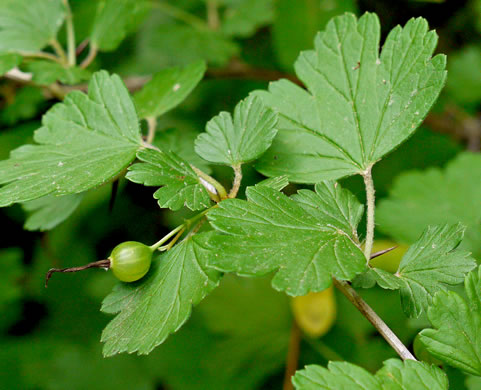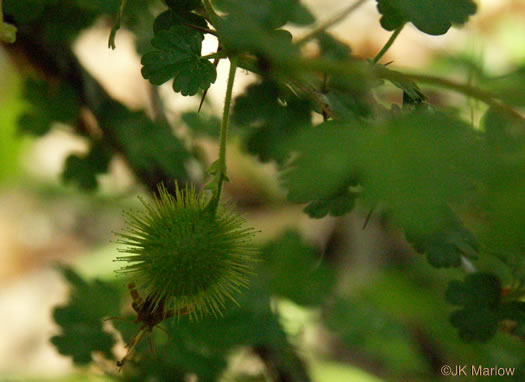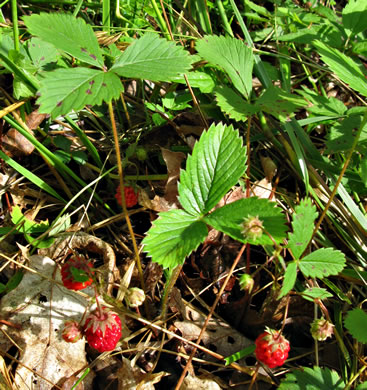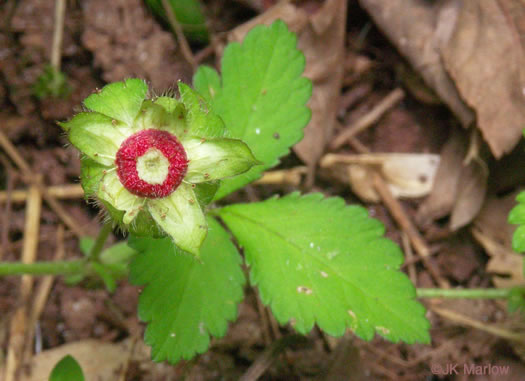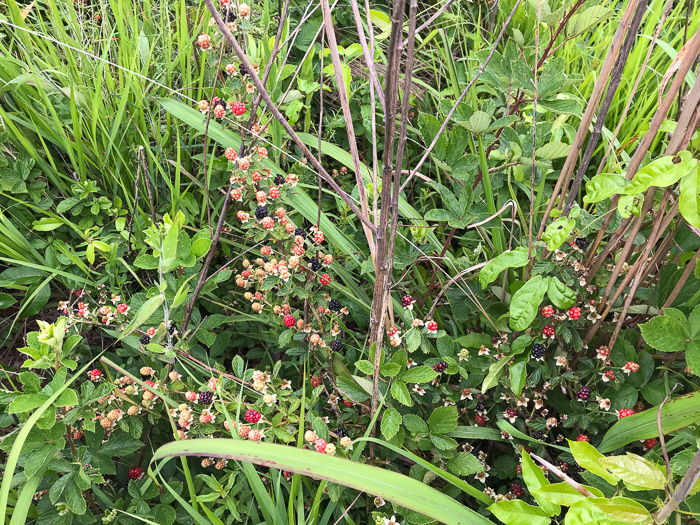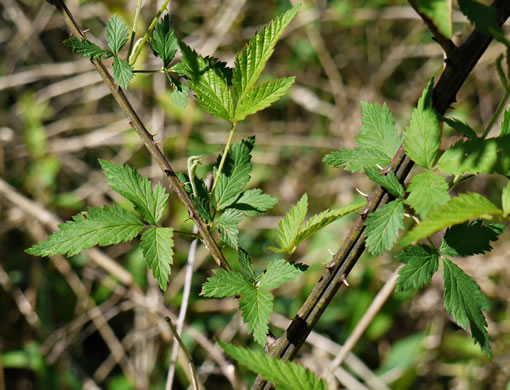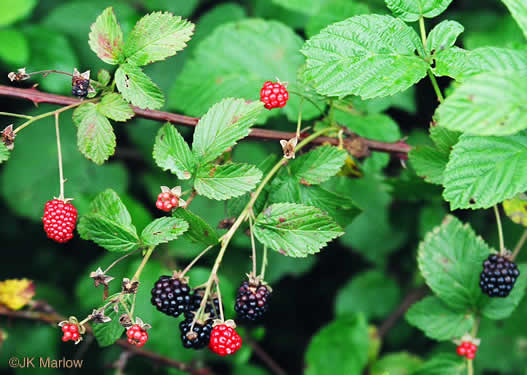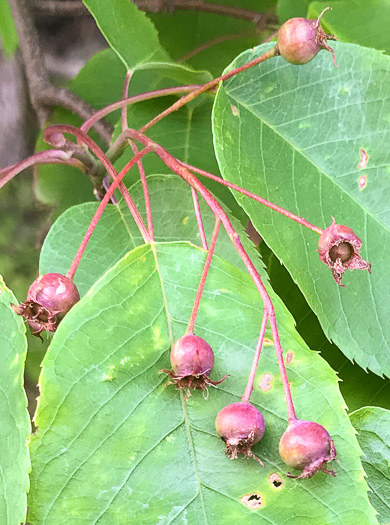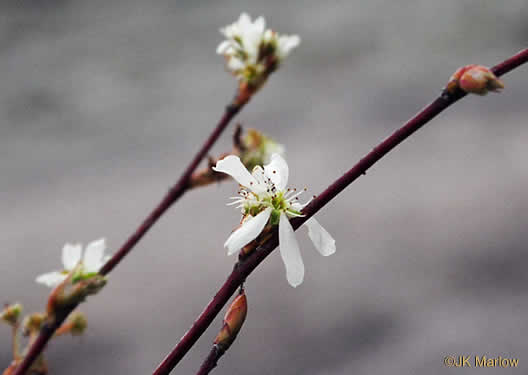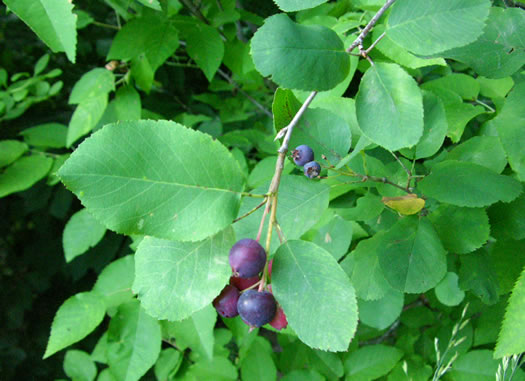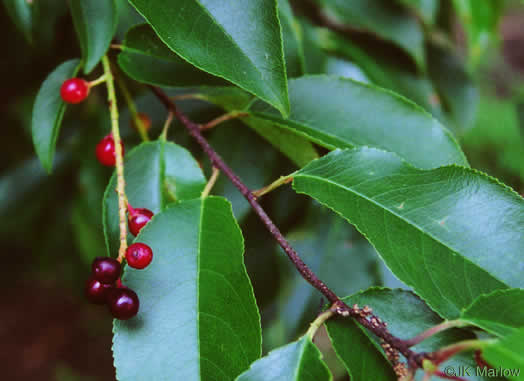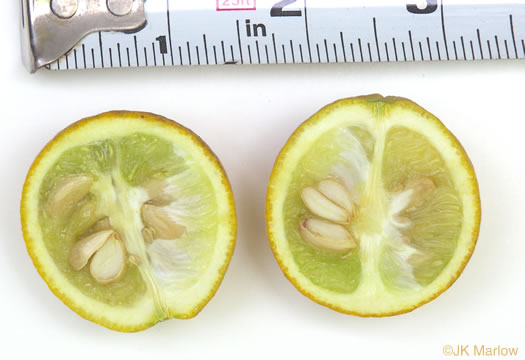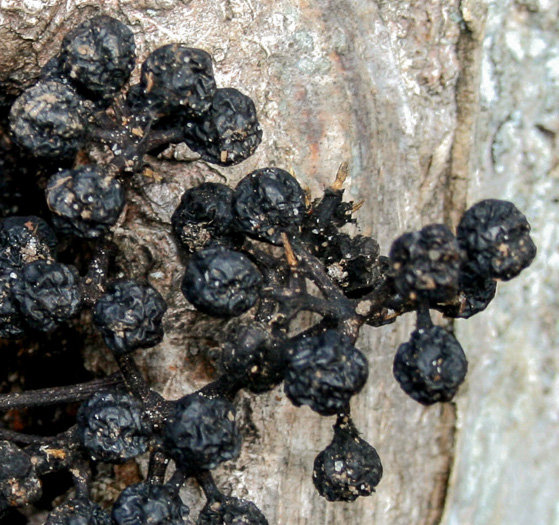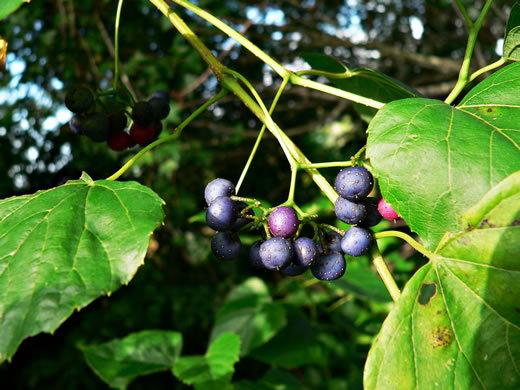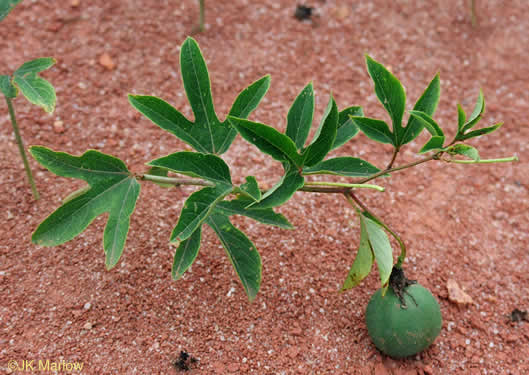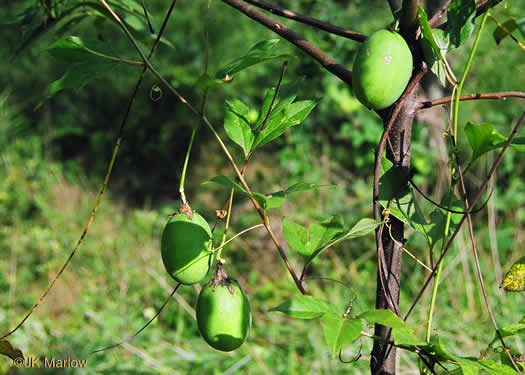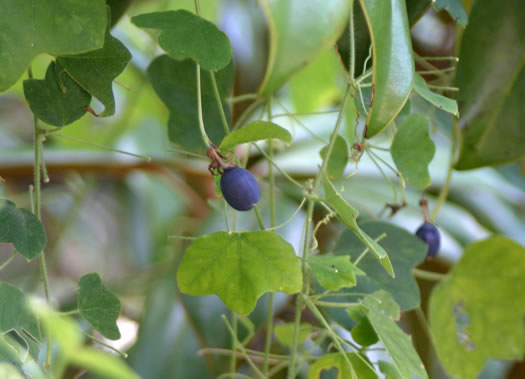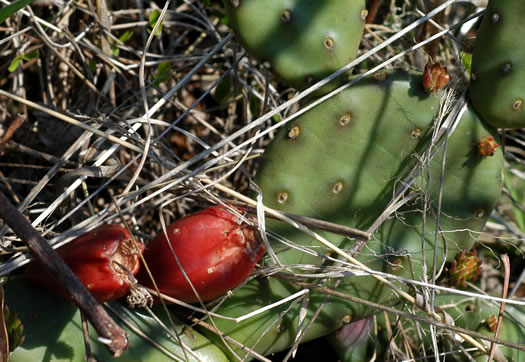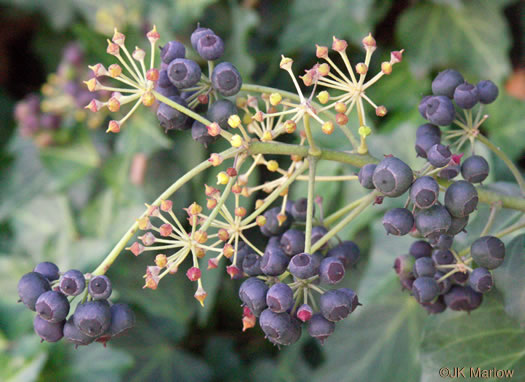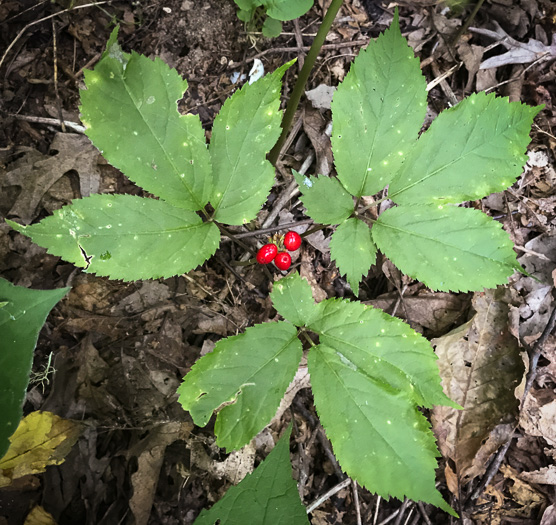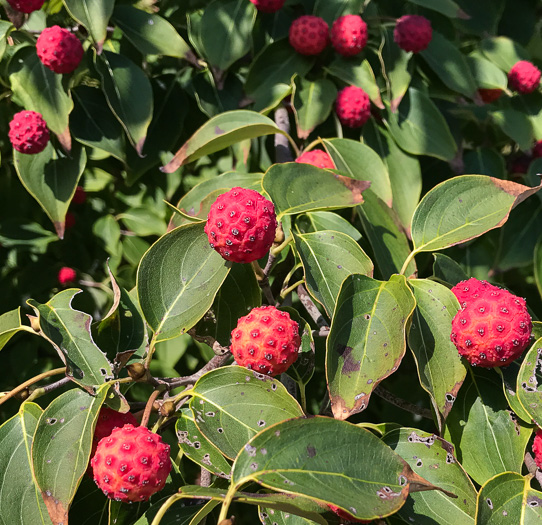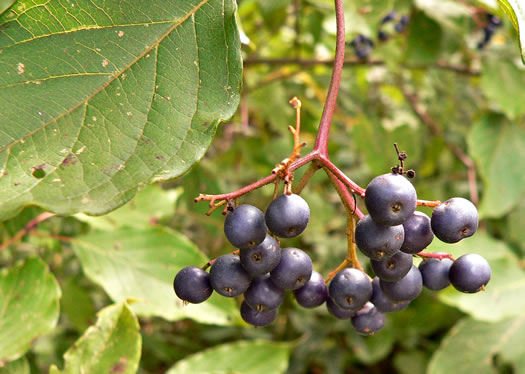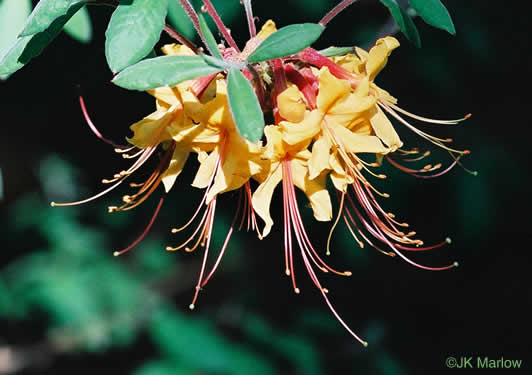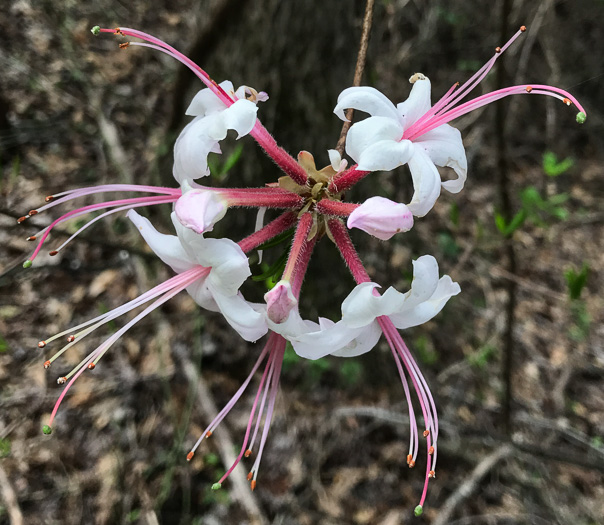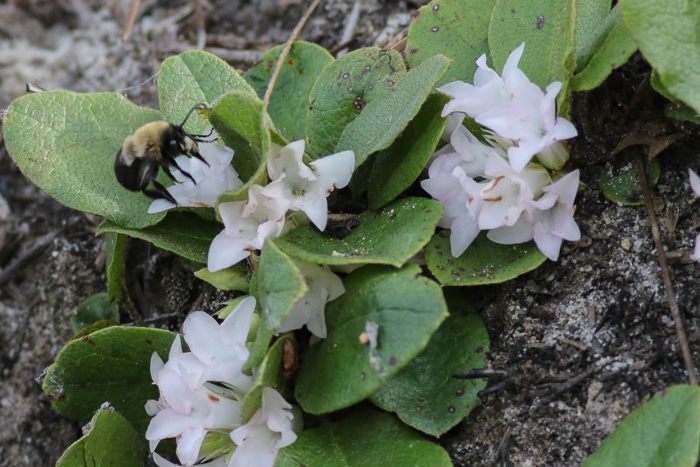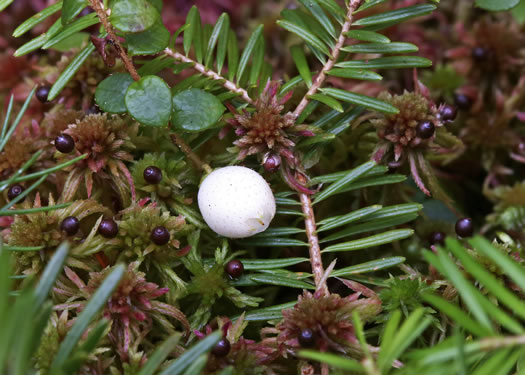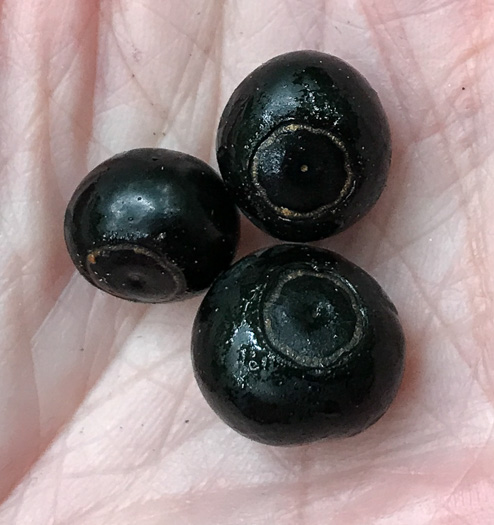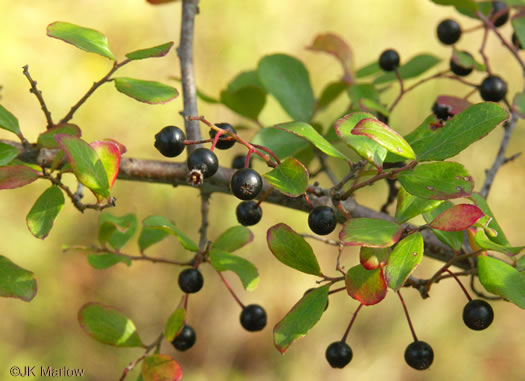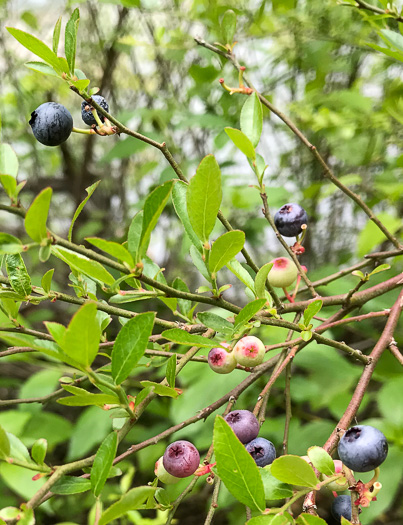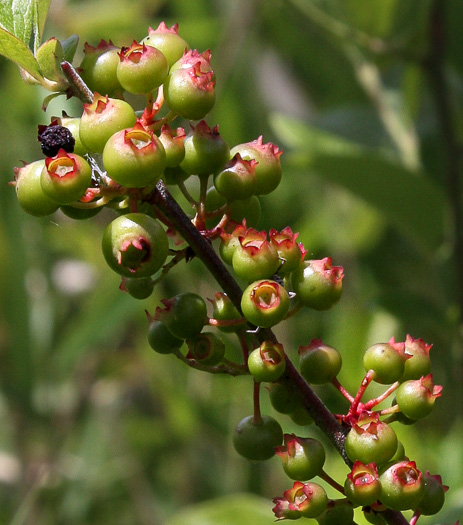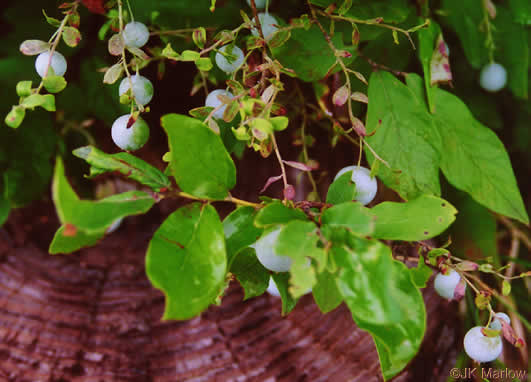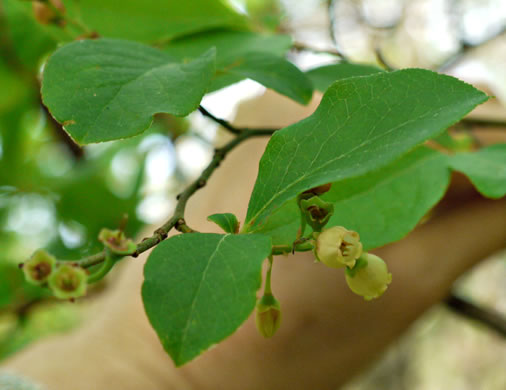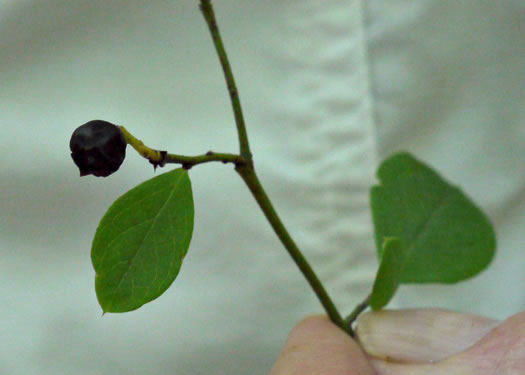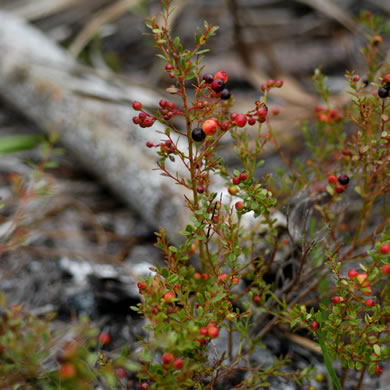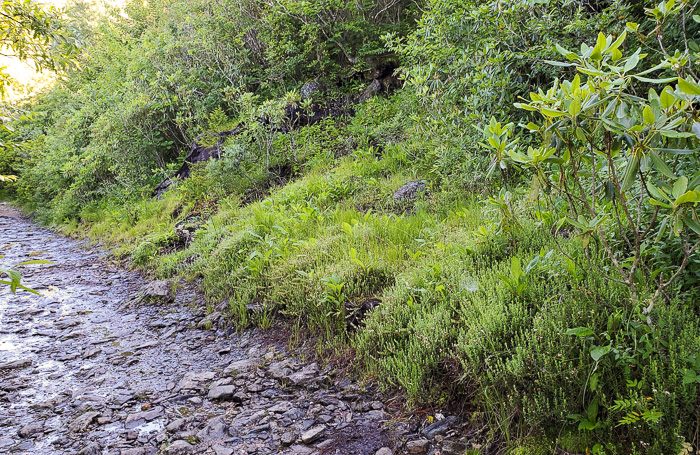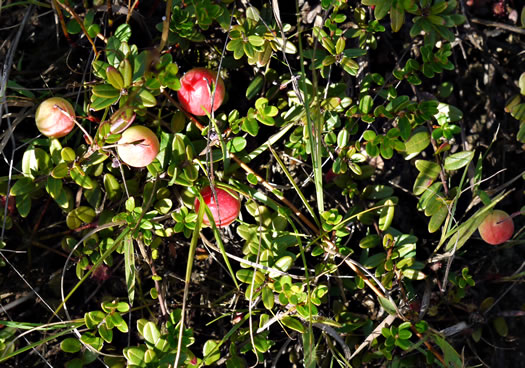Your search found 77 image(s) illustrating the term "berry." For a written explanation, click on "berry" in the Glossary.
PAGE 1 PAGE 2
To see larger pictures, click or hover over the thumbnails.
To go to the plant's detail page, click its name.
 Eastern Red Cedar,
Juniperus virginiana
Eastern Red Cedar,
Juniperus virginiana
Mature seed cones ~ 1/4", berry-like, greenish-blue with whitish coating, per Native Trees of the Southeast, An Identification Guide (Kirkman, Brown, & Leopold, 2007).
 Southern Red Cedar,
Juniperus silicicola
Southern Red Cedar,
Juniperus silicicola
Mature seed cones ~ 1/4", berry-like, greenish-blue with whitish coating, per Native Trees of the Southeast, An Identification Guide (Kirkman, Brown, & Leopold, 2007).
 Tawny Cottongrass,
Eriophorum virginicum
Tawny Cottongrass,
Eriophorum virginicum
This northern bog sedge can be found in WV's Cranberry Glades and Dolly Sods, per Alpine South: Plants and Plant Communities of the High Elevations of the Southern Appalachians (Gaddy, 2014).
 Skunk Cabbage,
Symplocarpus foetidus
Skunk Cabbage,
Symplocarpus foetidus
Fruits berry-like, in a subglobular mass to 4" wide, embedded with spherical seeds, per Wildflowers of Tennessee, the Ohio Valley, and the Southern Appalachians (Horn, Cathcart, Hemmerly, & Duhl, 2005).
 Biltmore Carrionflower,
Smilax biltmoreana
Biltmore Carrionflower,
Smilax biltmoreana
The tepals are attached at the base of the superior ovary (developing berry).
 Maritime Catbrier,
Smilax bona-nox var. littoralis
Maritime Catbrier,
Smilax bona-nox var. littoralis
One seed per berry. — Alan Weakley
 Dune Greenbrier,
Smilax auriculata
Dune Greenbrier,
Smilax auriculata
Two seeds per berry. — Alan Weakley
 Dwarf Smilax,
Smilax pumila
Dwarf Smilax,
Smilax pumila
Berry bright red, ovoid, tapered to an obtuse beak, 1-seeded, per Vascular Flora of the Carolinas (Radford, Ahles, & Bell, 1968).
 Painted Trillium,
Trillidium undulatum
Painted Trillium,
Trillidium undulatum
Berry scarlet, ovoid to ellipsoid, 1.2-2.2cm long, per Vascular Flora of the Carolinas (Radford, Ahles, & Bell, 1968).
 Bluebead-lily,
Clintonia borealis
Bluebead-lily,
Clintonia borealis
Fruit a bright blue ovoid berry, per Wildflowers & Plant Communities of the Southern Appalachian Mountains and Piedmont (Spira, 2011).
 Speckled Wood-lily,
Clintonia umbellulata
Speckled Wood-lily,
Clintonia umbellulata
Berry blue or black, 6-8mm long, per Vascular Flora of the Carolinas (Radford, Ahles, & Bell, 1968).
 False Solomon's Seal,
Maianthemum racemosum
False Solomon's Seal,
Maianthemum racemosum
Just before maturity the berry is green finely dotted with red, per Vascular Flora of the Carolinas (Radford, Ahles, & Bell, 1968).
 Downy Solomon’s Seal,
Polygonatum pubescens
Downy Solomon’s Seal,
Polygonatum pubescens
Berry blue-black, globose, 7-9mm in diameter, per Vascular Flora of the Carolinas (Radford, Ahles, & Bell, 1968).
 Red Mulberry,
Morus rubra
Red Mulberry,
Morus rubra
Fruit a multiple of drupes, resembling a blackberry, per Native Trees of the Southeast, An Identification Guide (Kirkman, Brown, & Leopold, 2007).
 Nestronia,
Nestronia umbellula
Nestronia,
Nestronia umbellula
Resembling an opposite-leaved lowbush blueberry, per Weakley's Flora.
 Japanese Barberry,
Berberis thunbergii
Japanese Barberry,
Berberis thunbergii
Fruit a pendant red berry, borne singly or 2-3 per cluster, per Woody Plants of the Blue Ridge (Lance).
 Japanese Barberry,
Berberis thunbergii
Japanese Barberry,
Berberis thunbergii
Most commonly encountered barberry in much of our area (immune to wheat rust), per Weakley's Flora.
 Leatherleaf Mahonia,
Mahonia bealei
Leatherleaf Mahonia,
Mahonia bealei
Fruit is a bluish berry maturing in July-August, per Manual of Woody Landscape Plants (Dirr, 1975+).
 Nandina,
Nandina domestica
Nandina,
Nandina domestica
Fruit is a red berry borne in terminal clusters, per Woody Plants of the Southeastern US: A Winter Guide (Lance, 2004).
 Common Blue Cohosh,
Caulophyllum thalictroides
Common Blue Cohosh,
Caulophyllum thalictroides
Fruits are dark blue, poisonous, and berry-like, per Wildflowers of Tennessee, the Ohio Valley, and the Southern Appalachians (Horn, Cathcart, Hemmerly, & Duhl, 2005).
 May-apple,
Podophyllum peltatum
May-apple,
Podophyllum peltatum
Yellow, fleshy, many-seeded, berry about the size of a small lemon, per Wildflowers of Tennessee, the Ohio Valley, and the Southern Appalachians (Horn, Cathcart, Hemmerly, & Duhl, 2005).
 Sweetbay,
Magnolia virginiana +
Sweetbay,
Magnolia virginiana +
Sweetbay Magnolia on the left, Bayberry on the right.
 Small-flowered Pawpaw,
Asimina parviflora
Small-flowered Pawpaw,
Asimina parviflora
Fruit a hard-pulpy berry, oblong, greenish-yellow, aromatic when mature, per Forest Plants of the Southeast and Their Wildlife Uses (Miller & Miller, 2005).
 Common Pawpaw,
Asimina triloba
Common Pawpaw,
Asimina triloba
Fruit a large berry, oblong to cylindrical, fleshy, edible, per Native Trees of the Southeast, An Identification Guide (Kirkman, Brown, & Leopold, 2007).
 Roundleaf Gooseberry,
Ribes rotundifolium
Roundleaf Gooseberry,
Ribes rotundifolium
Berry smooth, glabrous, 8-12mm in diameter, per Vascular Flora of the Carolinas (Radford, Ahles, & Bell, 1968).
 Miccosukee Gooseberry,
Ribes echinellum
Miccosukee Gooseberry,
Ribes echinellum
Berry densely glandular-spiny, ca. 12mm in diameter, per Vascular Flora of the Carolinas (Radford, Ahles, & Bell, 1968).
 Wild Strawberry,
Fragaria virginiana
Wild Strawberry,
Fragaria virginiana
The strawberry (actually an enlarged receptacle) is dotted with achenes, per Wildflowers of Tennessee, the Ohio Valley, and the Southern Appalachians (Horn, Cathcart, Hemmerly, & Duhl, 2005).
 Indian Strawberry,
Potentilla indica
Indian Strawberry,
Potentilla indica
The strawberry-like fruit is not sweet and, unlike Fragaria, its interior flesh is whitish, per Weakley's Flora (2025).
 Chesapeake Blackberry,
Rubus pascuus
Chesapeake Blackberry,
Rubus pascuus
R. pascuus may represent a stabilized hybrid between a European and a native blackberry species, per Flora of North America.
 Pennsylvania Blackberry,
Rubus pensilvanicus
Pennsylvania Blackberry,
Rubus pensilvanicus
The most common "highbush" blackberry in most of our area, per Weakley's Flora.
 Pennsylvania Blackberry,
Rubus pensilvanicus
Pennsylvania Blackberry,
Rubus pensilvanicus
Blackberry (aggregate fruit of drupelets) bright red maturing to blue-black, per Forest Plants of the Southeast and Their Wildlife Uses (Miller & Miller, 2005).
 Smooth Serviceberry,
Amelanchier laevis
Smooth Serviceberry,
Amelanchier laevis
Fruit a berry-like pome, initially red, ripening to dark purple or black, per Wildflowers & Plant Communities of the Southern Appalachian Mountains and Piedmont (Spira, 2011).
 Smooth Serviceberry,
Amelanchier laevis
Smooth Serviceberry,
Amelanchier laevis
Hmm... Serviceberry typically blooms in the spring!
 Running Serviceberry,
Amelanchier spicata
Running Serviceberry,
Amelanchier spicata
Leaves oval to suborbicular. Fruit a berrylike pome, per Native Shrubs and Woody Vines of the Southeast (Foote & Jones, 1989).
 Black Cherry,
Prunus serotina var. serotina
Black Cherry,
Prunus serotina var. serotina
Cherry trees are copious berry producers whose fruits helps sustain birds, per Bringing Nature Home (Tallamy, 2007).
 Trifoliate Orange,
Citrus trifoliata
Trifoliate Orange,
Citrus trifoliata
Fruit = hesperidium (fleshy berrylike fruit w tough rind, like lemon or orange).
 Amur Cork-tree,
Phellodendron amurense
Amur Cork-tree,
Phellodendron amurense
Berry-like, 1cm fruits remain on the tree through early winter, per New Invaders of the Northeast and Northcentral US (Rawlins et al., 2018).
 American Ampelopsis,
Ampelopsis cordata
American Ampelopsis,
Ampelopsis cordata
The fruit is a blue berry, not edible by humans, per Woody Plants of the Southeastern US: A Winter Guide (Lance, 2004).
 Purple Passionflower,
Passiflora incarnata
Purple Passionflower,
Passiflora incarnata
Fruit a yellow (green) edible berry, per Wildflowers of Tennessee (Carman, 2005).
 Purple Passionflower,
Passiflora incarnata
Purple Passionflower,
Passiflora incarnata
Fruit a large pod-like berry, ovoid, 4-6cm long, per Forest Plants of the Southeast and Their Wildlife Uses (Miller & Miller, 2005).
 Yellow Passionflower,
Passiflora lutea
Yellow Passionflower,
Passiflora lutea
Berry black at maturity, 0.8-1.5cm long, per Forest Plants of the Southeast and Their Wildlife Uses (Miller & Miller, 2005).
 Eastern Prickly-pear,
Opuntia mesacantha ssp. mesacantha
Eastern Prickly-pear,
Opuntia mesacantha ssp. mesacantha
Fruit a shiny reddish-brown berry, edible after tiny spines are removed, per All About South Carolina Wildflowers (Midgley, 1999).
 English Ivy,
Hedera helix
English Ivy,
Hedera helix
Fruit berrylike, borne in umbellate clusters, per Woody Plants of the Southeastern US: A Winter Guide (Lance, 2004).
 American Ginseng,
Panax quinquefolius
American Ginseng,
Panax quinquefolius
Berry-like drupes develop in late summer, ripening to crimson-red, per Wildflowers of Tennessee, the Ohio Valley, and the Southern Appalachians (Horn, Cathcart, Hemmerly, & Duhl, 2005).
 Kousa Dogwood,
Benthamidia japonica
Kousa Dogwood,
Benthamidia japonica
Fruits berrylike, ~ 3cm across, resembling large raspberries when ripe, per New Invaders of the Northeast and Northcentral US (Rawlins et al., 2018).
 Silky Dogwood,
Swida amomum
Silky Dogwood,
Swida amomum
Fruit a berry-like drupe, bluish with white blotches, per Wildflowers & Plant Communities of the Southern Appalachian Mountains and Piedmont (Spira, 2011).
 Florida Flame Azalea,
Rhododendron austrinum
Florida Flame Azalea,
Rhododendron austrinum
The fragrant flowers usually have pink to strawberry red tubes, per American Azaleas (Towe, 2004).
 Pinxterflower,
Rhododendron periclymenoides
Pinxterflower,
Rhododendron periclymenoides
Most flowers have dark pink to strawberry red tubes, per American Azaleas (Towe, 2004).
 Trailing Arbutus,
Epigaea repens
Trailing Arbutus,
Epigaea repens
Early and fragrant, attracting native bees like Southeastern Blueberry Bee. — Will Stuart
 Creeping Snowberry,
Gaultheria hispidula
Creeping Snowberry,
Gaultheria hispidula
The fruit is a white berry with a wintergreen flavor, per Newcomb's Wildflower Guide (Newcomb, 1977).
 Bear Huckleberry,
Gaylussacia ursina
Bear Huckleberry,
Gaylussacia ursina
Fruit a 10-seeded berry on a long stalk, shiny black when ripe, per Woody Plants of the Blue Ridge (Lance).
 Sparkleberry,
Vaccinium arboreum
Sparkleberry,
Vaccinium arboreum
Berry black, lustrous, 5-8mm long, dry and mealy, long persistent, per Vascular Flora of the Carolinas (Radford, Ahles, & Bell, 1968).
 Mayberry,
Vaccinium elliottii
Mayberry,
Vaccinium elliottii
Berry green ripening to bluish-black to black, occasionally whitish waxy, per Forest Plants of the Southeast and Their Wildlife Uses (Miller & Miller, 2005).
 Rabbiteye Blueberry,
Vaccinium virgatum
Rabbiteye Blueberry,
Vaccinium virgatum
Berry 8-15mm, black, lustrous [when ripe], per Woody Plants of the Southeastern US: A Winter Guide (Lance, 2004).
 Hillside Blueberry,
Vaccinium pallidum
Hillside Blueberry,
Vaccinium pallidum
Berry glaucous, blue, 5-10mm long, juicy, per Vascular Flora of the Carolinas (Radford, Ahles, & Bell, 1968).
 Smooth Highbush Blueberry,
Vaccinium corymbosum
Smooth Highbush Blueberry,
Vaccinium corymbosum
42 species of bees have been observed visiting highbush blueberry flowers, per Wildflowers & Plant Communities of the Southern Appalachian Mountains and Piedmont (Spira, 2011).
 Hairy Highbush Blueberry,
Vaccinium fuscatum
Hairy Highbush Blueberry,
Vaccinium fuscatum
Fruit a many-seeded black berry, per Vascular Flora of the Carolinas (Radford, Ahles, & Bell, 1968).
 Southern Evergreen Blueberry,
Vaccinium myrsinites
Southern Evergreen Blueberry,
Vaccinium myrsinites
Erect shrub 2-6dm tall, rhizomatous. Berry black or glaucous blue [when ripe], per Vascular Flora of the Carolinas (Radford, Ahles, & Bell, 1968).
 Cranberry,
Vaccinium macrocarpon
Cranberry,
Vaccinium macrocarpon
A shade-intolerant species, cranberry grows in open, poorly drained, acidic soils, per Wildflowers & Plant Communities of the Southern Appalachian Mountains and Piedmont (Spira, 2011).
 Cranberry,
Vaccinium macrocarpon
Cranberry,
Vaccinium macrocarpon
The same edible cranberry that's raised commercially in artificial bogs, per Weakley's Flora.

